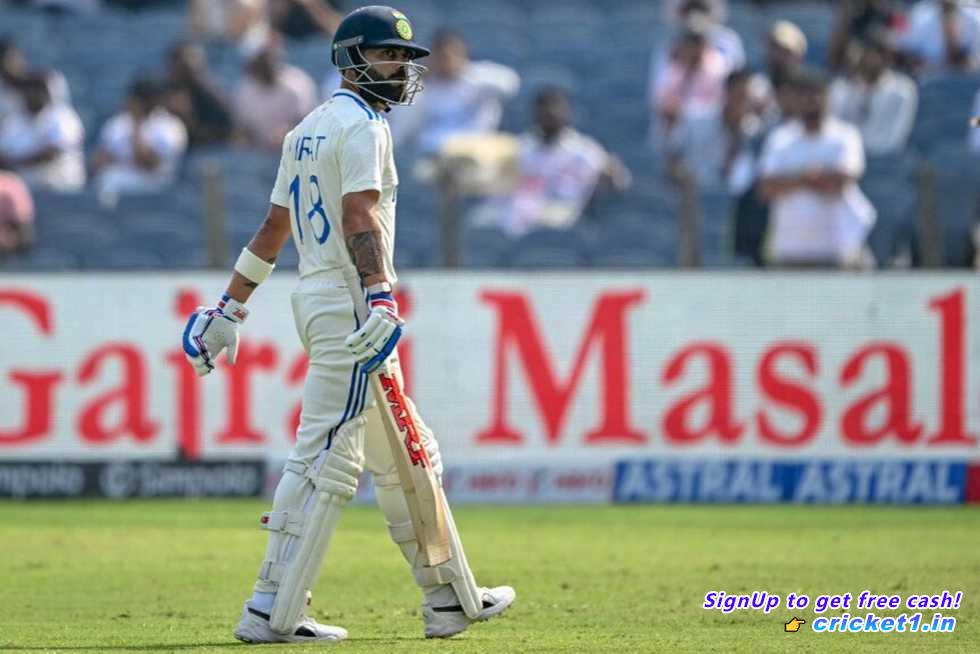
The Indian cricket team is grappling with a troubling pattern that has repeatedly surfaced over recent years—an inability to tackle left-arm spin. This persistent weakness reared its head once more as India plunged towards what could become their first series defeat on home soil in over a decade, a downturn they encountered on the tricky black soil pitch of Pune. It was here that New Zealand’s Mitchell Santner, through skilled left-arm spin bowling, unmasked frailties in the Indian batting arsenal—a flaw that Ajaz Patel, Matthew Kuhnemann, and Tom Hartley have also exploited in recent matches.
On pitches like Pune’s, where subtle turns from a good length are common and straighter deliveries can unexpectedly turn, the threat from left-arm spinners significantly increases. Notably, on these surfaces, the stumps remain vulnerable due to the erratic nature of the turn, thereby converting even seemingly benign deliveries into wicket-taking opportunities. The match saw a tactical demonstration of this challenge: Virat Kohli approached the crease with an open stance against Santner but ended up misjudging a ball that invited a devastating collapse, resulting in India’s dismal performance against left-arm spin once more. This was the 10th occasion in the last three years wherein Indian Test cricket stalwarts like Gill and Kohli have succumbed to this type of bowling under Asian conditions.
India’s batting strategy has attempted various methods to counter this threat. A significant move was including more left-handed batsmen, theoretically offering a better match against left-arm spin. The likes of Rishabh Pant were promoted to number five in Tests, with statistics showing that batsmen such as Pant, Yashasvi Jaiswal, and Ravindra Jadeja averaged over 75 against left-arm spin in the last three years. Even KL Rahul and Sarfaraz Khan have proved fairly adept, averaging around 45 against such attacks. However, these statistics did little to alter the tide in Pune’s challenging conditions.
The situation unfolded with Gill and Kohli departing early. With the pressure mounting, Santner’s calculated ploy trapped Sarfaraz with a misjudged lofted shot straight to mid-off. New Zealand then smartly deployed Glenn Phillips’ off-spin to challenge India’s left-handers.
. Phillips vindicated the tactical decision, as he managed to snap up Jaiswal at slip and later penetrated Pant’s defenses with a delivery that skidded on.
Cricket Test tactics like these calculated match-ups are growing increasingly vital. Mitchell Santner admitted to employing these strategies honed in T20 cricket, using varied speeds to stagger the Indian lineup. The mastery in spin bowling was evident as Santner picked up seven wickets, his deliveries ranging from mid-70 kph against the tail to nearly 90 kph that nailed Jadeja and Ashwin LBW. His astute use of angles also proved decisive, as seen in the deliveries that deceived Kohli and Bumrah.
Santner acknowledged inputs from Rangana Herath, New Zealand’s spin-bowling consultant and a master in using guile over radical changes in pace. Blending pace variation with subtlety, Santner troubled the seasoned Indian batsmen who have otherwise excelled against spin. Such expert techniques were not unlike those deployed by India’s own spin luminaries, Ashwin and Jadeja, during their successful campaigns.
India’s traditional strategies of stalwart defense and strike rotation seemed outmoded against this New Zealand side. The resultant 103-run first-innings lead highlighted their woes, drawing unfavorable comparison to how New Zealand’s batting capitalized in their own innings. The visitors managed to anchor influential partnerships, showcasing patience and adaptability that infused consistent pressure on India’s spin attack.
Reflecting on the failure, Morne Morkel, India’s bowling coach, pinpointed New Zealand’s adeptness in handling spin with innovative shot-making like sweeping and reverse sweeping, piling pressure back on Indian bowlers. As India stares down a potential chase exceeding 300 in the fourth innings—a formidable endeavor only once achieved successfully in home Test history—introspective evaluations beckon. Addressing their batting inconsistency against left-arm spin is imperative to avert an uncharacteristic series loss on home turf. Stats inputs from cricket analyst Deepu Narayanan indicate a harsh truth: India must innovate and adapt or face a historic setback.

